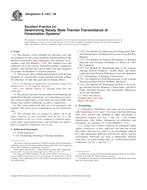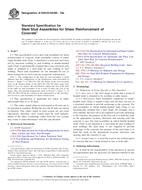1.1 This method is used to determine the concentration of available inorganic cyanide in an aqueous wastewater or effluent. The method detects the cyanides that are free (HCN and CN–) and metal-cyanide complexes that are easily dissociated into free cyanide ions. The method does not detect the less toxic strong metal-cyanide complexes, cyanides that are not “amenable to chlorination.”
1.2 Total cyanide can be determined for samples that have been distilled as described in Test Methods D 2036, Test Method A, Total Cyanides after Distillation. The cyanide complexes are dissociated and absorbed into the sodium hydroxide capture solution, which can be analyzed with this test method; therefore, ligand exchange reagents from sections 8.12 and 8.13 would not be required when determining total cyanide after distillation.
1.3 This procedure is applicable over a range of approximately 2 to 400 µg/L (parts per billion) available cyanide. Higher concentrations can be analyzed by dilution or lower injection volume.
1.4 This standard does not purport to address all of the safety concerns, if any, associated with its use. It is the responsibility of the user of this standard to establish appropriate safety and health practices and determine the applicability of regulatory limitations prior to use. Specific hazard statements are given in Note 2 and Section 9.
Product Details
- Published:
- 06/01/2004
- Number of Pages:
- 7
- File Size:
- 1 file , 83 KB
- Redline File Size:
- 2 files , 150 KB


